Quail - introduction
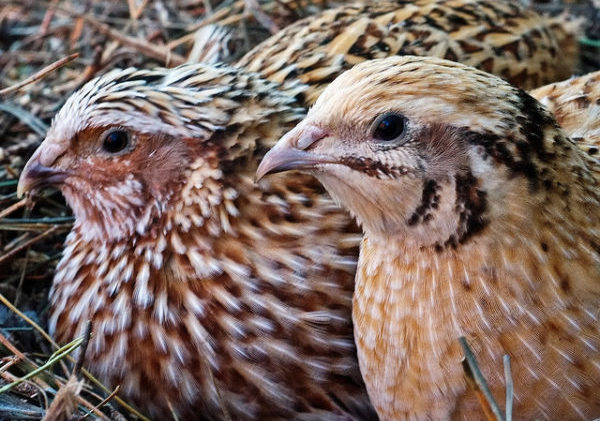
“The song-birds leave us at the summer’s close, Only the empty nests are left behind. And pipings of the quail among the sheaves.” – Henry Wadsworth Longfellow
Contents
What are quail?
Quail is a collective name for several species of birds with similar appearance and behaviours. Quail are generally medium-sized (though tiny from the poultry-keeper’s perspective) birds that are shy and ground dwelling. They eat a variety of insects, seeds and other plants. Their social habits are variable, with most species living in pairs, small family groups or larger groups depending on season and circumstances.
Domestic quail generally come from 2 families: The ‘Old World’ quail (family Phasianidae) and the ‘New World’ quail (family Odontophoridae). Old World quail, originating mostly in east Asia, include the species of quail most commonly kept for meat and egg production – such as the productive Coturnix quail and some ornamental species like the Chinese painted quail. New World species, from North and South America, include those traditionally kept as game birds such as the bobwhite quail. These are also kept for meat and, to a lesser extent, eggs.
The Coturnix quail (Coturnix japonica) is the most commonly kept domestic quail. It’s often referred to as the Japanese quail. Originally domesticated in the 11th or 12th century as a song bird, it has been bred for eggs since the 1900s. There are now a few distinct breeds of this species, such as the Japanese, English white and the Italian. These breeds vary a little in size, so some may be more suitable for meat production than others, but in general they share characteristics and vary only in appearance.

A Japanese Coturnix quail (pic: Ingrid Taylar, creative commons).
What are the benefits of keeping quail?
If you don’t quite have the space for chickens but you want super-low-food-miles meat and eggs straight from your back garden, quail might be the poultry for you. Coturnix quail are generally easy to manage and they require less space than other poultry. They are fast-growing, becoming sexually mature at around 8 weeks, and can produce up to 300 eggs per year, or 5 eggs every 4 days. They also have an excellent feed-to-egg conversion ratio.
Quails’ eggs are around one fifth the size of a chicken’s egg and taste similar. Even on a small scale you should be able to produce them at a lower cost than you can buy them. They are often used in salads but can be used in any of the ways a hen’s egg can. If you get a glut of them they are great for pickling.
If you can sell your quail eggs and meat directly to restaurants in your local area you should get a good price. The novelty value of quail can make them easier to market to individual consumers as well. Selling hatching eggs or adult birds can provide an additional income; this is especially true if you keep some of the more ornamental breeds, although they are less productive.
Quail are undeniably cute and, if raised from hatching, can be very tame. Their small size means there is no issue with aggression towards small children as there can be with the males of larger poultry, and their calls are pleasant and unlikely to annoy the neighbours. All this means that quail might be an option where other poultry are not.

Bobwhite quail are often raised as game birds. They can be kept for meat and will produce a few eggs a week as well (pic: DickDaniels, creative commons).
What can I do?
Getting your quail
The easiest quail to start with is the Coturnix quail. They are not only the most productive but also the least flighty and hardiest of the quail species. You may want to choose one of the ‘Jumbo’ breeds if you are keen to produce meat. Otherwise, pick a colour that you like, or get a mixture for variety. You can easily hatch out your own birds with an incubator, a heat lamp and an indoor space to raise the chicks. If you want tame quail, the surest way to achieve that is to hatch your own. If this is not for you, then if you buy 8-week-old quail they will be fully mature and ready to live in their adult enclosure.
You may be able to find a breeder locally. Otherwise it’s straightforward to order hatching eggs online. There are even stories of success from incubating eggs bought from the shops (probably a result of the early sexual maturation of quail). Quail can be kept in large mixed groups, but make sure you have at least 2 females to every male to prevent aggression and over-mating.

The Chinese painted quail is a commonly-kept ornamental quail that lays large numbers of very small eggs (pic: DickDaniels, creative commons).
Housing
Quail are susceptible to attack from cats and rats as well as foxes. They can also fly away if startled and will not return. Therefore, their daytime accommodation needs to be cat-proof and covered, and night-time accommodation needs to be rat-proof. This could mean a mesh base on their run or being shut up in a house at night.
Quail are often kept in rabbit hutches. These can make good night-time accommodation and shelters; quail do not need nest boxes or perches. A larger run should be provided, and bear in mind that quail will fly directly upwards when startled and, in an enclosed space, will hit their heads and can injure themselves badly. Their runs should therefore have high roofs and netting hanging below the ceiling to soften any impact. Accommodation needs to be well ventilated; quail droppings produce a lot of ammonia. At the same time quail need more protection from the cold in winter than other poultry. Placing their house in a sheltered spot, providing plenty of bedding and covering it in an old blanket on cold nights is usually sufficient.
As quail are ground-dwelling birds, they should be provided with plenty of things to hide behind and under such as rocks, branches, logs or old plant pots. They should also have areas to dust bathe (see health, below). If they need to get into a house this should be at ground level or raised up only slightly with a very shallow ramp. Give quails as much space and interest in their run as you can to prevent them from becoming bored and stressed.
A nicely set up quail aviary.
Feeding
Specialist feeds are available for adult breeding or laying quail (they require 18-20% protein). These should be introduced gradually from 8 weeks of age. If specialist chick crumbs (up to 5 weeks) or grower pellets (5-10 weeks or until slaughter for meat birds) are not available, then unmedicated turkey feeds provide the correct amount of protein. Quail also need to be provided with some greens; they like lettuce particularly but this could also be grass or leafy vegetables. Ideally quail would have enough space to forage and supplement their diet with insects, seeds and plants, but providing them with the space to do this must be balanced with the need to prevent them flying away and to protect them from predators.
You may be able to mix your own feed using meal worms, seeds and grains. This can be a way of reducing food miles and avoiding unsustainable ingredients. Some people do not recommend this as you may not provide your birds with the balanced diet they need. Do your research and be particularly aware of the protein levels in the feed.
Quail can be fed ad lib and should always have access to fresh water, grit and, if they are laying, a source of calcium. With quail this is often cuttlefish rather than oyster shell as this can help keep their beaks and nails from over-growing.

A variety of quail eggs. The far left egg is Coturnix, the middle egg is Bobwhite and the smallest grey egg is a Chinese painted egg (pic: Midland Quails).
Breeding
Generally broodiness has been bred out of quail and they will not sit on their eggs, or even lay their eggs consistently in the same place. You can try to encourage them to go broody by providing plenty of cover and nesting materials in their pen. When quail occasionally do sit on and incubate eggs they often will not look after the chicks once hatched and you’ll have to take over. The small size of quail eggs means they can’t easily be hatched under a broody hen as can be done with other poultry.
Most incubators can be used to hatch quail eggs (sometimes you’ll need to buy an additional tray due to the small size of the eggs). The incubation period for Coturnix is 18 days, a few days shorter or longer for other species of quail. They can be raised in a similar manner to chickens with a heat lamp or electric hen. Though if you have a mesh-sided brooder you’ll need to make sure the holes are small enough to prevent them escaping. Quail are generally easy to raise. They’re not aggressive towards each other as newly-hatched chickens can be. Feeding them boiled quail egg yolk on day one can help them recover from hatching more quickly and get off to a good start. They can be even more prone to slipping than hen chicks so should be provided with some non-slip matting in their brooder.

Week-old quail chicks (pic: Melville, creative commons).
Health
Quail need a dust bath to help them control external parasites such as lice and mites. You can either provide a box full of dry soil and sand, or a covered area where they can dig their own dust bath. Adding diatomaceous earth to the dust bath can help protect them from parasites. If your quail do suffer from lice or mites you can add lice powder to their dust bath; this is far more effective and less stressful than trying to apply it directly yourself.
As with chickens, red mite can be a particular problem. The mites live in the house and attack the birds at night. You can prevent and treat red mite by regularly cleaning the house with a pressure washer, special detergent and/or a steam cleaner. Pay special attention to cracks and crevices. Afterwards you can dust the house with diatomaceous earth or a mite powder (organic products are available). If the battle with red mite begins to sap your will to live, you may want to consider buying a plastic house for your birds. Plastic houses don’t provide the same hospitable habitat for the mites.
Quail using a dust bath.
Quail suffer from intestinal parasites such as roundworm and tapeworm. It is generally recommended to treat your birds for worms at least twice a year. If you want to avoid chemical wormers, and avoid contributing to the problem of resistance to medications, you can perform a faecal egg count (FEC) on your quail’s droppings to check if they need to be wormed. You can do this yourself if you have a microscope, or you can buy a kit and send off a sample. This website has a detailed tutorial on how to conduct FECs, including a list of the equipment needed and images of parasite eggs found in poultry.
You can control parasites to a certain extent by removing droppings, adding apple cider vinegar to the water, garlic to the feed and giving a ‘herbal’ wormer. Depending on your set up you can also move your quail pen to new ground every so often, though this ‘pasture rotation’ can be less practical with quail than other poultry due to their need for a secure run. Even if you are using all these methods you should still perform regular FECs.
Occasionally quail will get overgrown beaks and toenails. Providing a cuttlefish can help with this, while providing a good source of calcium for layers. It’s also important to make sure your birds are kept on dry ground, otherwise balls of mud can accumulate on the bottom of their feet preventing their toenails from wearing normally.
A quail pen with planting to provide plenty of hiding places.
Meat production & slaughter
Quail are usually slaughtered for meat at around 8 weeks, they will remain tender for longer than this though and can be slaughtered after a season of laying. They can be difficult to pluck due to the thinness of their skin so are often skinned. Many people do prefer them with the skin on, however, and they can be plucked with care and practice.
It’s legal to slaughter quail at home for consumption by yourself and your immediate family provided it’s done humanely. Quail can be easier to dispatch than other poultry due to their small size but it’s still advisable to get the help of an experienced person or to attend a course on humane slaughter. See the Humane Slaughter Association for more information. Plucking and butchering are not difficult skills to learn and there are many online articles and videos to help you with this process.
For the smallholder, supplying small numbers of birds directly to consumers or to local retailers, it’s also possible to slaughter and process your birds on farm, although you must register with your local authority. If you plan to produce meat for sale and you slaughter the birds yourself, or send them to a slaughter-house but take on the butchery yourself, you’ll need to follow hygiene regulations and have your premises inspected by Environmental Health on a regular basis. Contact the Food Standards Agency for further information.
Paperwork and regulations
You have to register with DEFRA and standard regulations apply if you keep more than 50 birds (including other types of poultry). There are no regulations for people keeping fewer than 50 birds other than the general rules and regulations covering animal welfare.
Specialist(s)
Thanks to Megan Lee of Westbraes ScotLAND Centre for the information. Main image by The Blackthorn Orphans.

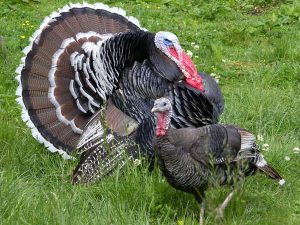
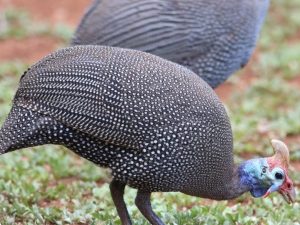
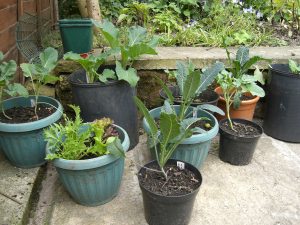
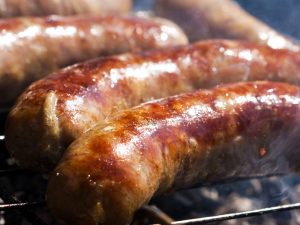
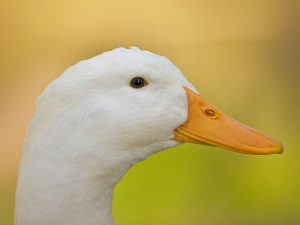
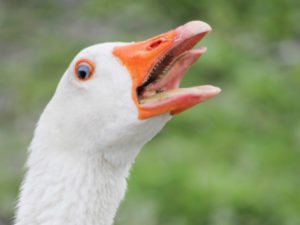

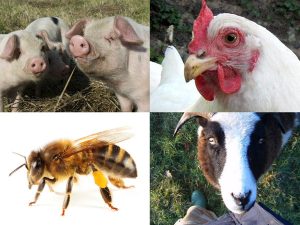
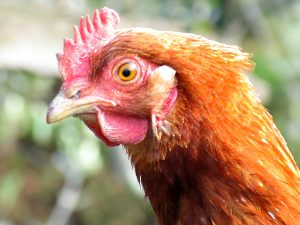
1 Comment
lGood Day ,what will the egg roll tray guap be for the cornix quail to roll out.
Regards.
Christopher.